
This jeopardy style interactive reviews social studies content.
- Subject:
- Social Studies
- Material Type:
- Presentation
- Provider:
- Jeopardy Labs
- Date Added:
- 08/09/2017

This jeopardy style interactive reviews social studies content.

Containing more than 50 articles from the award-winning Tar Heel Junior Historian magazine and over 40 lesson plans, this multidisciplinary Educator Notebook will enrich your exploration of North Carolina and American history with diverse perspectives. This resource's link takes you to a very short form that gives you free downloadable access to the complete PDF book.

Students will do research into colonial life and then compare/contrast to their own lives. They will share this information digitally using a class Google Slides presentation.
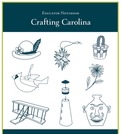
Enrich your lessons of North Carolina history and culture by connecting the past to crafts that are easy and fun to make in your classroom. Supply lists and instructions are provided on each page! Make copies as needed for your students and share accompanying histories to add meaning to the activities. This resource's link takes you to a very short form that gives you free downloadable access to the complete PDF book.
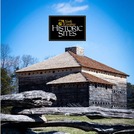
Fort Dobbs has created a series of short videos designed to teach students about the settlement of the Northwest Carolina backcountry, the lives of the Native Americans living in and near the region of Fort Dobbs, the life of a North Carolina Provincial Soldier, and North Carolina's role during the French and Indian War. The videos are designed for teachers to use them separately to fit into their own lessons or can be grouped together by theme.

Students will learn abouth te Freemen's Colony which was established by Union soldiers during the American Civil War.

In this lesson, students become food explorers and investigate where the foods we eat came from. Note: This lesson was created in accordance with the VIF Global Competence Indicators for Grade 4. For more information about VIF and these indicators, please visit https://www.vifprogram.com/. This lesson was developed by Brenda Todd as part of their completion of the North Carolina Global Educator Digital Badge program. This lesson plan has been vetted at the local and state level for standards alignment, Global Education focus, and content accuracy.

Students and teachers can learn about the Haudenosaunee Alliance of various Native American groups including the Mohak from North Carolina.

In this lesson, students will understand the importance of the Native American Cultural Heritage through the lenses of their own home country indigenous cultural heritage.
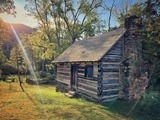
In these videos, artifacts from the Vance Birthplace State Historic Site collection are featured with clues about their purpose. Students try to solve the History Mystery before the answer is revealed.
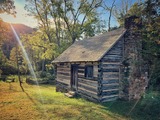
This video series is broken up into two-part mini programs which each include a short video history lesson followed by a second video with a craft activity. These videos are designed to be viewed together to learn about history of Vance Birthplace State Historic Site in the mountains of North Carolina and life in the 1800s.

Students learn about the general history and culture of American Indians from a present-day perspective. This activity has students discovering the names and locations of the eight state-recognized tribes in North Carolina.
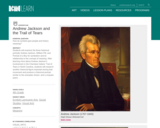
Students will examine the three historical portraits Andrew Jackson, William Pitt, and Portrait of a Boy for symbolism and its relationship to the concept of meaning. After learning more about Andrew Jackson’s involvement in the Cherokee Indians’ Trail of Tears in North Carolina, students will research another historical figure important during that movement and produce a historical portrait, similar to the examples shown, and a cinquain poem.

This site provides a brief synopsis of the history, geography, people and the economy of North Carolina.

Students will learn bout hte origins and importance of Princeville, North Carolina.

This resource provides information on how and why people settled in the Piedmont in the 1700s. It also explores their reasons for settling in the Piedmont and the hardships they faced on their route to the area.
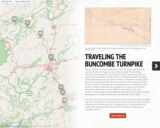
In this activity, students use a story map to follow the historic route of the Buncombe Turnpike and learn more about its economic and cultural impact on western North Carolina. Students will also see how the landscape has transformed in the nearly 200 years since the creation of the Turnpike.

This inquiry leads students to explore the cultural diversity of the Appalachia region by looking across artisan crafts and artifacts, music, and literature.